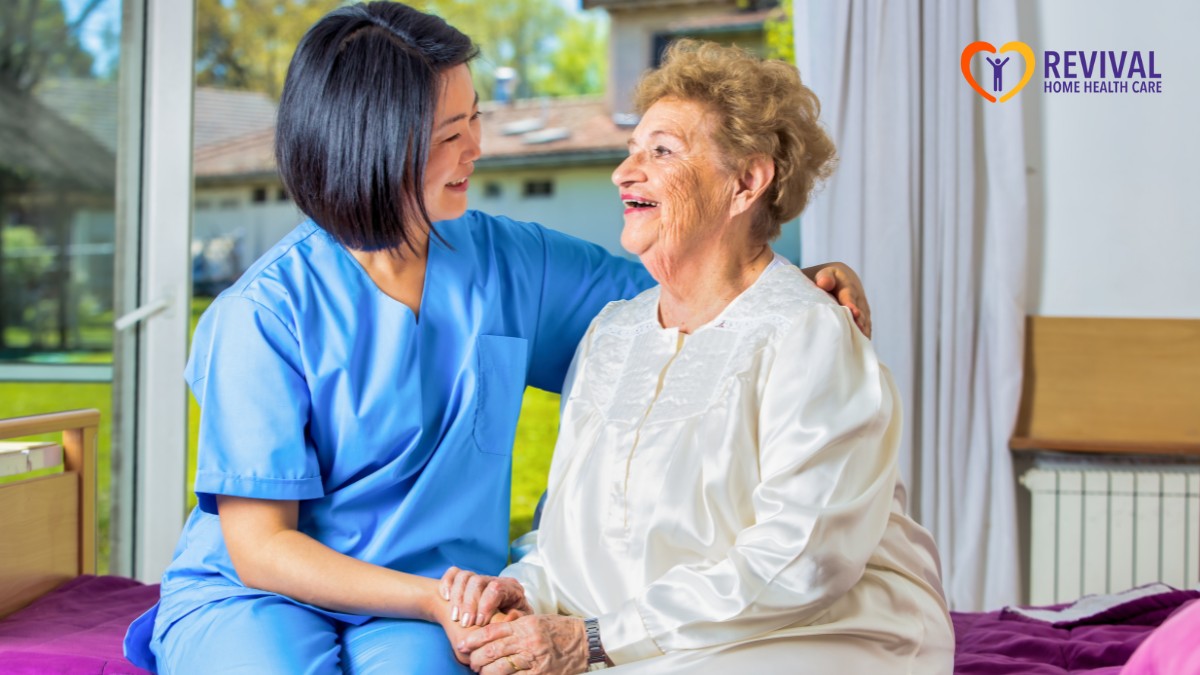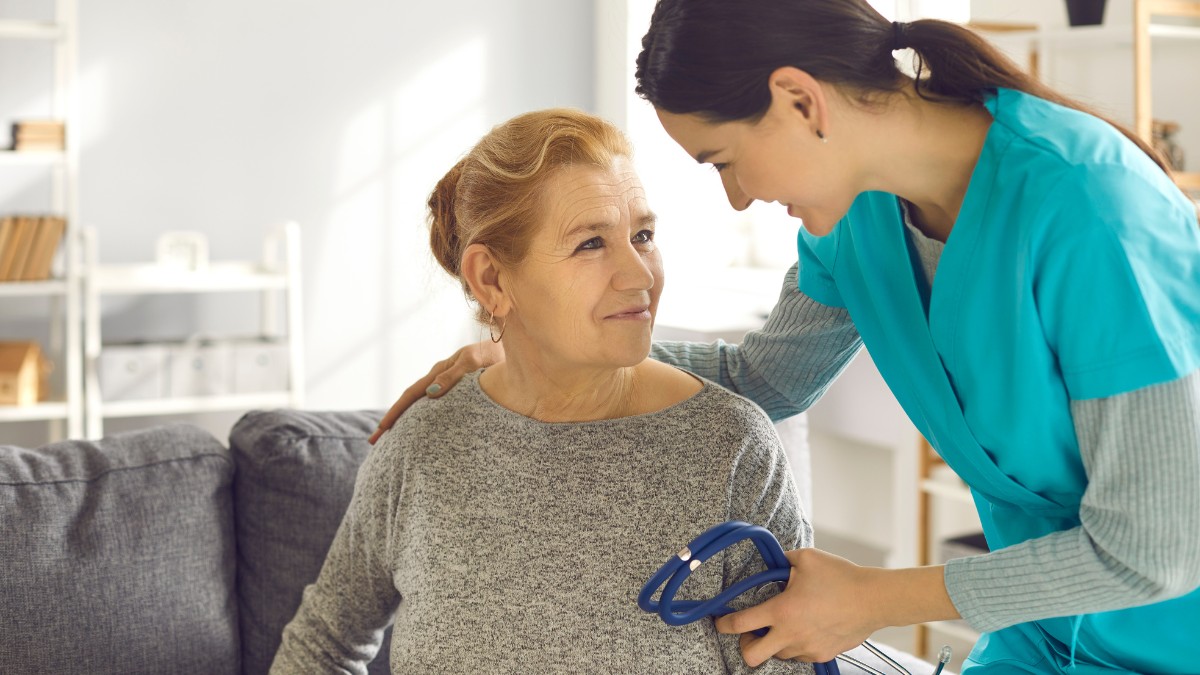Key Points:
- A first visit with a home health aide typically includes introductions, care plan review, and home safety checks.
- Home health aides assist with daily personal care, mobility, and basic household tasks, with empathy and respect.
- Clear communication, preparation, and knowing what to expect help ease anxieties and promote a successful caregiving relationship.
Welcoming a home health aide into your home for the first time can be both a relief and a source of anxiety. Whether you’re arranging care for a loved one or preparing to support yourself, not knowing what will happen during that first visit can feel overwhelming.
Rest assured, the first visit is designed to build trust, set expectations, and ensure a smooth start. This article will walk you through everything that typically happens during a home health aide’s first visit—so you feel informed, reassured, and ready.

Understanding the Role of a Home Health Aide
Before we dive into the details of the first visit, it’s helpful to understand what a home health aide does. Home health aides provide non-medical support in a client’s home, helping with daily activities that may have become difficult due to age, disability, or chronic illness.
Their duties can include:
- Assistance with bathing, dressing, and grooming
- Light housekeeping, such as tidying and laundry
- Meal preparation and feeding support
- Mobility help, such as transferring from bed to chair
- Monitoring changes in physical or mental health
- Providing companionship and emotional support
They do not perform medical tasks like administering medication injections or managing complex medical treatments, which are typically handled by nurses or therapists.
Before the First Visit: What Happens Behind the Scenes
Before a home health aide ever steps into the home, there’s usually an assessment conducted by a nurse or care coordinator. This assessment helps develop a personalized care plan based on the client’s needs, preferences, and goals.
The care plan guides the aide’s daily responsibilities and ensures consistency in care delivery. In most cases, the home health aide will have already reviewed this plan before the first visit.
You may also receive a call ahead of the visit confirming the date, time, and name of the aide. This helps you prepare and sets the stage for a respectful, professional experience.

The First Visit: Step-by-Step Overview
The first visit from a home health aide sets the tone for the entire care relationship. It’s a time for introductions, building trust, and aligning expectations. While it’s natural to feel uncertain, knowing what typically happens during this initial visit can bring a sense of control and peace of mind. Here’s a step-by-step look at what you can expect.
First Impressions and Introductions
When the home health aide arrives, the first few minutes are all about building rapport. They’ll introduce themselves, explain their role, and show empathy for the adjustment the client and family may be going through.
Don’t be surprised if the aide takes a few moments to observe and listen. Understanding your household’s rhythm is part of delivering personalized care.
Reviewing the Care Plan Together
Next, the aide will review the care plan with the client or family member. This includes a breakdown of scheduled tasks, preferences (like preferred meal times or shower routines), and any safety concerns.
This is a good time to ask questions or clarify expectations. If there’s something you’d like done a certain way—like how laundry is sorted or which soap is preferred—speak up. The aide’s goal is to support, not disrupt.
Tour of the Home
To ensure a safe and efficient workflow, the aide will likely ask for a quick tour. They’ll need to know where key supplies are kept (like towels, cleaning supplies, and medications) and will be looking out for any potential safety hazards.
During this walk-through, they may suggest small changes—like removing loose rugs or repositioning furniture—to help prevent falls.
Starting the Routine
Once everyone feels comfortable, the aide will begin the agreed-upon tasks. These might include helping with personal hygiene, preparing a meal, or assisting with a walk.
Expect the aide to move at the client’s pace. They’re trained to encourage independence wherever possible, providing support without taking over.
Tips to Make the First Visit Go Smoothly
The first visit from a home health aide can set the tone for the entire caregiving relationship. Taking a few simple steps before and during that visit can ease stress, build trust, and ensure everyone feels comfortable and prepared. Here are some helpful tips to make the first day go as smoothly as possible.
Be Present if Possible
If you’re a family caregiver or loved one, try to be there for the first visit—even just for a portion. Your presence can ease the transition and give the aide valuable context.
Gather Essential Information
Before the aide arrives, collect important documents and items, such as:
- Emergency contact list
- List of medications
- Daily schedule or preferences
- Notes about any mobility or cognitive challenges
Having these ready can streamline the visit and help the aide get off to a strong start.
Be Honest About Needs
This is a chance to be open about what’s working and what’s not. Whether you need help with meal prep or more time for grooming, communicating clearly ensures that care is delivered effectively and respectfully.
Common Concerns and How to Address Them
It’s completely normal to have concerns when starting in-home care for the first time. Whether you’re the one receiving care or arranging it for a loved one, questions about routines, compatibility, and emergencies often come up. Addressing these concerns early can help build trust and set the foundation for a successful relationship with your home health aide.
“Will the aide understand our routine?”
Yes—routine is a cornerstone of in-home care. Home health aides are trained to follow your existing patterns as much as possible. The goal is to enhance comfort, not introduce unnecessary change.
“What if the client is resistant to help?”
It’s common for individuals—especially seniors—to feel uneasy about receiving help. Aides are trained in gentle persuasion, active listening, and empathy. Sometimes, just one or two visits are all it takes for the relationship to grow.
“Can the aide handle emergencies?”
While home health aides are not nurses, they are trained in basic emergency response. They know how to recognize health warning signs and when to escalate care or call for help.
After the First Visit: What Comes Next?
After the initial visit, you’ll likely have the opportunity to provide feedback. Was the aide a good fit? Did everything go as expected? This feedback loop helps care teams fine-tune services and ensure the right match between aide and client.
Consistency is important. You may see the same aide regularly, or rotate between a small team. Either way, routines will become smoother, and comfort levels usually increase with time.
Know That Support Is Always Available
Bringing someone into your home is deeply personal, and it’s natural to have concerns. But knowing what to expect from that first visit with a home health aide can ease anxiety and build confidence.
A good aide brings more than skills—they bring respect, compassion, and a genuine desire to help. That first visit is just the beginning of what can become a supportive, meaningful relationship.
Get Started With a Compassionate Home Health Aide in New York
If you or a loved one is preparing for in-home care, let Revival Home Health Care provide the trusted support you need. Our experienced, compassionate home health aides in New York are trained to make first visits comfortable, respectful, and aligned with your needs.
Whether you’re seeking help with personal care, mobility, or daily living, we’re here to walk alongside you every step of the way. Contact us today to learn more and take the first step toward dependable, professional in-home care.


 75 Vanderbilt Ave Staten Island, NY 10304
75 Vanderbilt Ave Staten Island, NY 10304 info@revivalhhc.org
info@revivalhhc.org 718.629.1000
718.629.1000